Installing a C-Head in a Fuji 35, Spring 2015
One of the things my wife has never enjoyed about boats and RVs is any hint of an odor from the head. She is apparently quite sensitive to these smells. On our first "real" boat, Buen Tiempo, we never used the holding tank, opting instead for the Wag Bag Toilet System, now renamed the Go Anywhere Toilet Kit. That worked well enough for overnight stays on board, but for longer trips, it was a bit of a hassle. While researching the subject, I became aware of the so-called composting toilets, actually more of a dehydrating or pre-composting toilet.
The advantages of a composting toilet were that we could eliminate the holding tank, thus eliminating odors associated with it and the need to find pump-out stations. Additionally, a tremendous amount of storage space could be made available if the holding tank was removed. Composting toilets are also essentially maintenance free and don't ever plug.
When we purchased Lotus, our Fuji 35 Ketch, I began to look into the option more seriously. There were three contenders: the Air Head, Nature's Head and the C-Head. We wanted a full size toilet seat, if possible, which both Nature's Head and C-Head offered. The C-Head was less expensive, and was more easily emptied. The churning handle was on top, so there was no issue with side clearance as there might be with the other two options. In addition, the urine container was a readily-available one gallon water jug rather than a proprietary product. On the downside, it only had a one gallon liquids capacity compared to the two gallon capacity of the competing products.
I decided to order a C-Head. The developer of the C-Head, Captain Sandy, was very approachable by email and responded to all my questions quickly. The order arrived promptly and in good condition. The construction was solid, a point I worried about a little based on photographs I had seen of all the toilets. I decided to give the C-Head a trial run in one of our bathrooms at home, abusing it slightly by not ventilating it and not necessarily changing out the urine collection container as often as might normally be done. Impressively, there was no odor other than the slightly earthy smell from the peat moss we used to charge the toilet. After a few week's trial run, I was sold on the system.
The next step was to install it in our 1977 Fuji 35 Ketch. First, I removed the existing head. I created a template with paper for the bolts that held the original head in place on its base, then created a base out of plywood to fit the C-Head. After covering the base with epoxy and paint to match the teak interior trim, I bolted the base in place using the original bolts. The C-Head sits on the base and is held in place by the raised edges. I considered tying it down, as well, but it has not budged in waves nor healing angles, so I am not convinced that is needed. The C-Head is a tall toilet, which was no problem for me, but we did need to get a small folding foot stool for my wife to be able to use it comfortably.
We keep our boat on a mooring, and the head is considerably better ventilated than our home bathroom, so I expected no odor problems with the new head arrangement, even though I haven't gone through the effort to install either passive or active ventilation. We weren't disappointed. It worked very well for us. With weekend use, the solids container lasted all season. We generally changed out the urine container once a day. Our success with the C-Head means I will be installing one in our camping trailer now, too.
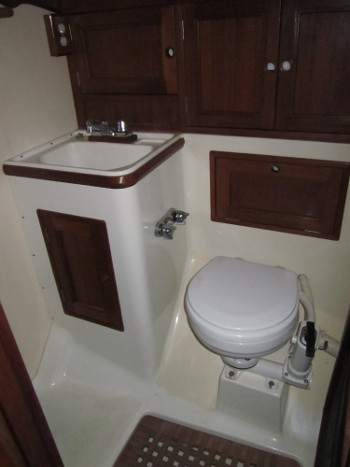
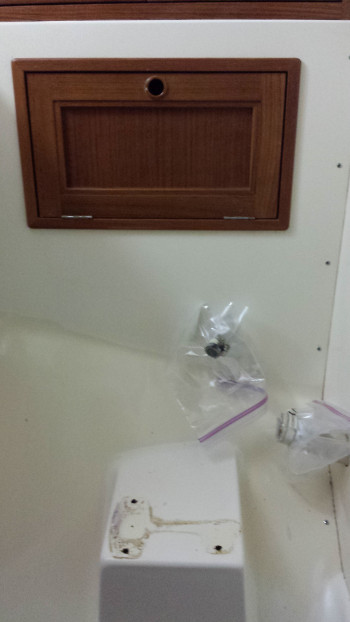
The original head in our Fuji 35 (left); and after removal (right)
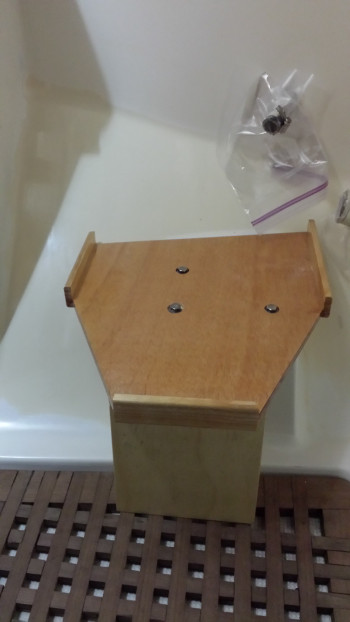
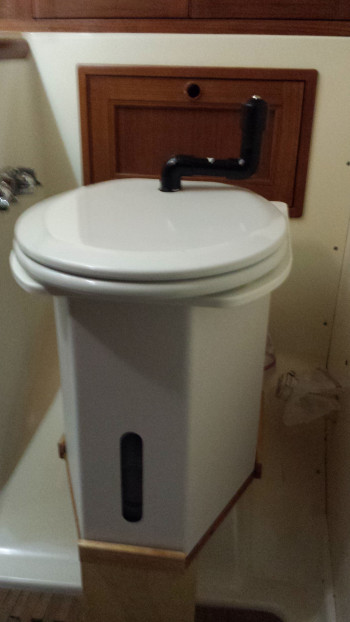
The plywood base in place, epoxy-coated, but not yet painted (left); C-Head installed on not-yet-painted base (right)
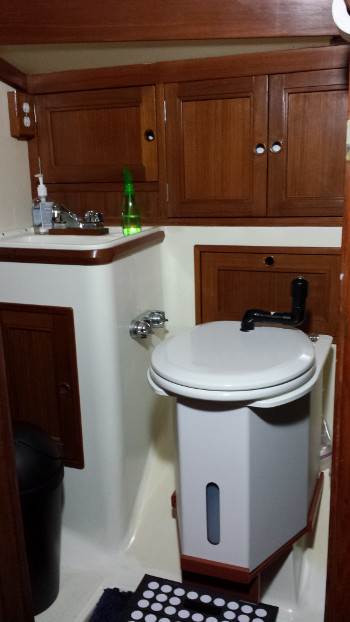
The finished product